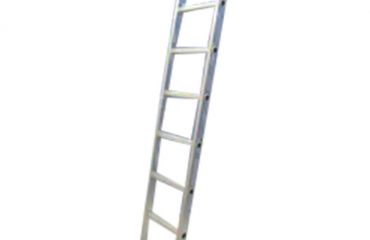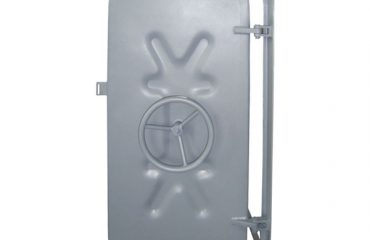
Marine Windows
On ships, yachts, and various marine vessels, marine windows are far more than just components for viewing the sea. They serve as critical barriers against harsh marine conditions, protect the safety of crew and passengers, and play an important role in the overall functionality of the vessel. Understanding their characteristics and importance is essential for anyone involved in marine operations.
Core Functions Beyond Visual Access
The most obvious function of marine windows is to provide a clear view of the external environment, which is vital for navigation. Captains and crew rely on these windows to observe sea conditions, spot other vessels, identify navigation marks, and assess potential hazards like reefs or debris. Without unobstructed visibility, safe navigation becomes extremely challenging, especially in complex marine areas such as busy ports or narrow waterways.
Beyond visibility, marine windows act as a primary defense against the elements. The marine environment is harsh, with strong winds, heavy rain, high – speed waves, and even salt spray that can corrode materials. High – quality marine windows are designed to withstand these forces, preventing water from entering the vessel and maintaining a dry, stable interior environment. They also help insulate the vessel, reducing heat loss in cold weather and minimizing the impact of external temperatures on the internal climate, which contributes to the comfort of those on board.
Material Selection: Balancing Durability and Performance
The choice of materials for marine windows is crucial, as they need to meet strict standards for durability, strength, and resistance to marine corrosion. Traditional marine windows often used glass, but modern options have evolved to include more advanced materials.
Tempered glass is a common choice for marine windows. It is stronger than regular glass and, if broken, shatters into small, rounded pieces that are less likely to cause injury. This safety feature is essential in the event of accidents or impacts from waves or debris. However, tempered glass can be heavy, which may be a consideration for smaller vessels where weight management is important.
Polycarbonate is another popular material for marine windows. It is lightweight, impact – resistant, and has excellent resistance to UV radiation, which prevents yellowing or degradation over time due to sun exposure. Polycarbonate windows are also more flexible than glass, making them less likely to crack under the stress of the vessel’s movement in rough seas. Additionally, their light weight helps reduce the overall weight of the vessel, improving fuel efficiency and maneuverability.
Acrylic, also known as plexiglass, is another option for marine windows. It offers good clarity, similar to glass, and is lighter than tempered glass. Acrylic is also resistant to impact and UV radiation, but it is more prone to scratching compared to polycarbonate. To address this issue, many acrylic marine windows are coated with a scratch – resistant layer to enhance their durability.

Marine Windows
Application Scenarios Across Vessel Types
Marine windows are used in a wide range of vessel types, each with specific requirements based on the vessel’s purpose and operating environment.
On commercial ships such as cargo vessels and tankers, marine windows are designed to be large and robust. The windows in the bridge, where the captain and navigation team work, need to provide a wide field of view to monitor the surrounding area. These windows are often made of thick tempered glass or polycarbonate to withstand the strong winds and waves encountered during long – distance ocean voyages. They may also be equipped with wipers and washers to maintain visibility in heavy rain or salt spray.
Yachts and recreational boats have different requirements for marine windows. Aesthetics and comfort are often prioritized alongside functionality. Yacht windows may be designed in various shapes and sizes to enhance the vessel’s appearance, while still meeting safety standards. Many yacht windows use polycarbonate or acrylic to reduce weight, as these vessels often prioritize speed and maneuverability. They may also include features like tinted glass to reduce glare from the sun, improving the comfort of passengers and crew.
Research vessels and offshore platforms require marine windows that can withstand extreme conditions. These vessels often operate in remote areas with harsh weather, such as the Arctic or Antarctic regions, or in offshore oil and gas fields where they may be exposed to strong winds, high waves, and even chemical exposure. Marine windows for these applications are made of highly durable materials and undergo rigorous testing to ensure they can withstand extreme temperatures, pressure, and corrosion.
Maintenance: Ensuring Long –Term Performance
Proper maintenance is essential to ensure the long – term performance and safety of marine windows. The marine environment, with its saltwater, humidity, and UV radiation, can cause damage to windows over time if not properly cared for.
Regular cleaning is the first step in maintaining marine windows. Salt spray can leave a residue on the surface of the windows, which, if not removed, can cause scratching and corrosion. Windows should be cleaned with a mild, non – abrasive cleaner and a soft cloth to avoid damaging the surface. Avoid using harsh chemicals or abrasive materials, as these can scratch or degrade the window material.
Inspection is another important part of maintenance. Crew members or vessel owners should regularly inspect marine windows for signs of damage, such as cracks, chips, or leaks. Pay close attention to the seals around the windows, as these can deteriorate over time, leading to water leakage. If any damage is found, it should be repaired or replaced immediately to prevent further issues.
For windows with moving parts, such as wipers or opening mechanisms, regular lubrication is necessary to ensure smooth operation. Lubricate the moving parts with a marine – grade lubricant that is resistant to saltwater and corrosion.





